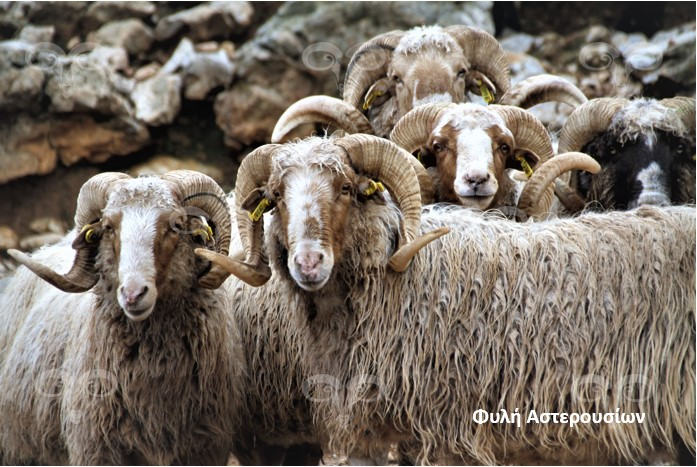History
The description of Asteriousa sheep as a distinct breed is recent and coincided with that of the Anogia sheep which it resembles considerably. Asterousia sheep originated in central Crete, in the Asterousia Mountain range, after which the breed was named. Few pure herds survive but there are many pure and crossed animals in mixed herds of the island. The breed is subject to traditional methods of management. It is well adapted, ecologically integrated and constitutes an inextricable part of the region’s habitats and eco-system. Local pastures are degraded due to intense overgrazing by great numbers of sheep and goats. As a result the sheep utilize all kinds of local vegetation and have to be supplemented with additional feed.
Morphological Traits
Asterousia sheep are small-sized, coarse-woolled and thin-tailed. The average ewes’ weight is 34 kg and average height at the withers is 56 cm.


Rams carry relatively large, spiral horns. A small proportion of ewes carry horns with distinctively refined tips. The head is of medium size with a triangular face, wide forehead, straight nose and relatively small horizontal ears. The tail is thin, long and covered with wool.
The fleece contains a low percentage of awn-like hair. It covers a small part of the body leaving the head, the belly and the limbs free of wool. The colour is uniform. The body is white with reddish spots of variable size on the head, especially on the cheeks, around the eyes, ears, limbs and tail. A percentage of animals have black instead of reddish spotting. Very few animals have solid white heads.
Population
According to the Athens CAGR data, in 2006 the population of the Asterousia breed was approximately 2,500 animals, classifying the breed in the ‘Minority’ status.


